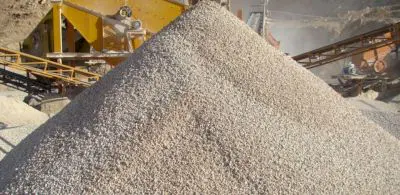Sand Prices in Iran
Iran in the Middle East country has a strategic position in the Persian Gulf region, and the Strait of Hormuz to its south is a vital route for crude oil transportation. Sand is produced by crushing rocks. There are air routes between most of the world's major countries and Iran's top cities. Most of the coarse aggregates have fine materials, such as clay or dust from the stone crushing process, with a rough texture. Oil and natural gas are Iran's most important exports, and imports are: non-electrical machinery (17 percent of total imports), iron and steel (14 percent), chemicals and related products. Natural sandNatural sand is one of the coarse types of materials that are obtained from the depths of wells and are usually available in red and orange colors
Add your import and export orders to this list
Warning: Undefined variable $formTitle in /home/anbar/domains/anbar.asia/anbar/inc/html/desktop/orderform.php on line 10
Warning: Undefined variable $marketName in /home/anbar/domains/anbar.asia/anbar/inc/html/desktop/orderform.php on line 12
Warning: Undefined variable $location in /home/anbar/domains/anbar.asia/anbar/inc/html/desktop/orderform.php on line 12
If you want to trade in the , please join in Anbar Asia. Your order will be shown here, so the traders of contact you

Iran is the world's fourth-largest oil producer, with 9.4 percent of the, and the world's first-largest gas reserves with 18 percent of the world's proven gas reserves. The total annual consumption of sand in the world is approximately 53 billion tons, if we consider this figure for people on the planet, each person uses 20 kilograms of sand daily. The Customs of the Islamic Republic of Iran is a governmental organization subordinated to the Ministry of Economic Affairs and Finance. Sand is formed by the erosion or breaking of pebbles and the weathering of rocks
- Iran paint Market
- Iran Concrete blocks Market
- Iran Brick Market
- Iran Clay Market
- Iran Cement Market
- Iran Ceramic Tile Market
- Iran Sand Market
- Iran wood and timber Market
- Iran Glass Market
- Iran Plaster Market
- Iran lime Market

According to the standard classification of uniform soil, sand is divided into two categories: fine sand and coarse sand. Solid soil particles are called sand if their diameter is between 0.50 and 2 mm. Sand is in very commonly use in construction, often providing bulk, strength and stability to other construction materials such as asphalt, concrete, mortar, render, cement, and screed.
Read More ...
The assigned missions are prepared by the Customs of the Islamic Republic of Iran and after the approval of the Minister of Economic Affairs and Finance, are approved by the Council of Ministers. The Customs of the Islamic Republic of Iran include the Central Headquarters of the Iranian Customs and the Customs and Enforcement Customs. It is as follows:
Read More ...
Sand is produced by crushing rocks. Coarse stones are produced from the crushing and separation of natural stones, and finer sands, in addition to stones, also contain shells and corals. In civil engineering, aggregates smaller than 75 mm and coarser than 4.75 are called sand. Sands are divided into two categories according to the source and type of grains used in construction.
Read More ...
